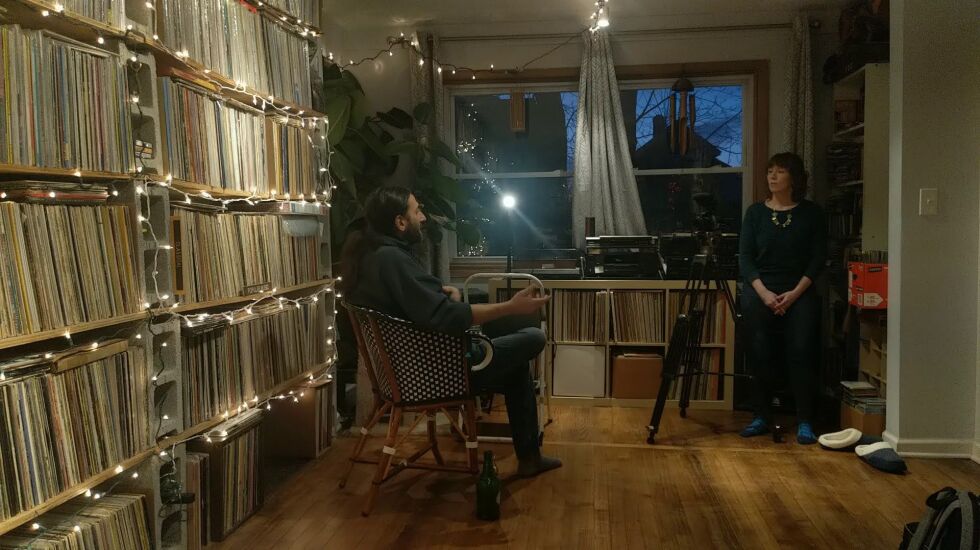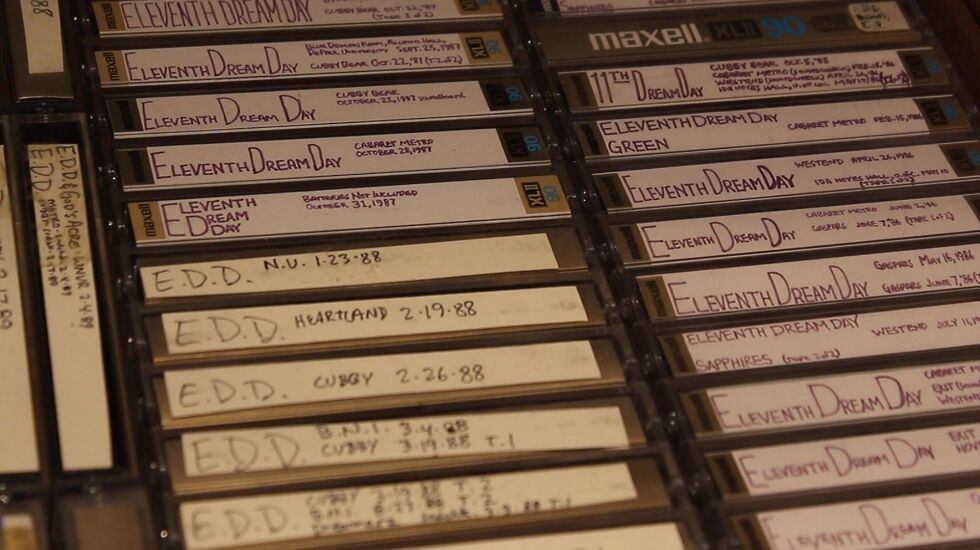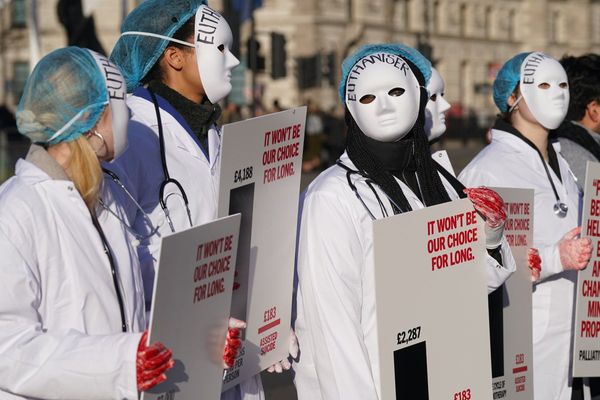
Music collector and archivist Aadam Jacobs holds a unique position in Chicago rock history.
By his own estimation, Jacobs has recorded more than 30,000 individual sets of live music, dating back to 1984. His ballpark guess is that he has more than 10,000 tapes, with an average of three bands on each one. Because he recorded everything from brief, in-store appearances to all-day festivals, Jacobs believes the total could be closer to 40,000 sets of music.
Jacobs’ massive, personal archive is at the center of local director Katlin Schneider’s compelling, finely crafted documentary “Melomaniac.” The Chicago Underground Film Festival will present the world premiere of the documentary at 7 p.m. Thursday at Harper Theater, with an additional screening on Sept. 16 at noon.
The soundtrack to “Melomaniac” is filled with sizzling audio recordings that Jacobs made between 1985 and 2007, including music by Antietam, Eleventh Dream Day and The Mekons.
Among the interviewees in Schneider’s film are several Chicago venue owners and bookers, as well as musicians Jon Langford (of The Mekons) and Janet Beveridge Bean and Rick Rizzo (of Eleventh Dream Day) and comedy star Fred Armisen (“Saturday Night Live,” “Portlandia”), who formerly played drums in Trenchmouth.
“I went into every interview having prepared questions that would make sure we could tell the story of the Chicago music scene at that time,” Schneider told the Sun-Times via video chat. “I wasn’t interested in personal drama, necessarily. I wanted [the film] to be a combination of a history of Chicago and a human interest piece.”

Schneider, who holds a degree in screenwriting from Columbia College Chicago, spent four years making “Melomaniac,” which is her first feature-length film.
The documentary provides viewers with a definition of the word “melomaniac,” which can refer to “someone with an abnormal fondness and intense devotion to music.”
Jacobs does, indeed, deeply love music, but he rarely tapes concerts nowadays. In a previous era, he would haul portable recording equipment around the city to document shows at the Empty Bottle, Fireside Bowl, Hideout, Metro, Schubas and other venues. In some situations, Jacobs secured the band’s permission to record the show, but other times, he didn’t.
“I had one unstated goal, and that was to enjoy music every night,” Jacobs said during a separate video chat from his home west of Logan Square.
Jacobs, who would sometimes record three shows a night, often gave copies of his tapes to the bands, and he never asked for any financial compensation.
Fans have traded his tapes around the world. But Jacobs opposes the practice of opportunists acquiring his tapes and converting them into unauthorized “bootleg” recordings that are sold on the underground market.

Among the acclaimed bands that have officially released material that Jacobs recorded are Built to Spill, The Mekons, The Sea and Cake, Sonic Youth and Wilco.
In addition to creating an audio archive with handwritten notation identifying the band, the date and the venue, Jacobs has collected mounds of rock memorabilia, such as ticket stubs, posters, promotional flyers, stickers and backstage passes.
The film raises a few key questions: What is going to happen to Jacobs’ archive in the coming years, and could an institution preserve it and make it accessible to researchers?
“My hope, my ambition, is that people outside of [Jacobs’] circle, outside of Chicago, see this film and lend their support in making sure this piece of history continues,” Schneider explained. “I do hope that there’s some access to [the archive] in the future. I think it would be lovely for people to be able to listen to those recordings, and see the evolution of artists, and get a better feeling of what Chicago was like through the music at that time.”

Jacobs, 56, echoed Schneider’s sentiment. “I can’t sit on this hoard until I die,” he said. “What difference is it going to make, whether the tapes exist or not, if nobody hears them? I just don’t have the time to sit and start digitizing and uploading things en masse to the internet. Someone else is going to need to do that. And that’s why an institution should be found. It would be a shame if these things just withered away.”
He added, “It’s going to be a lot easier, I think, to find a home for this stuff with a film behind it.”
Schneider’s documentary serves as a time machine back to an era when concertgoers could not reach into their pockets, pull out a cell phone and immediately capture a performance. Prior to the rise of the smartphone, superfans who were compelled to record performances had to be tenacious or sneaky — or both.







